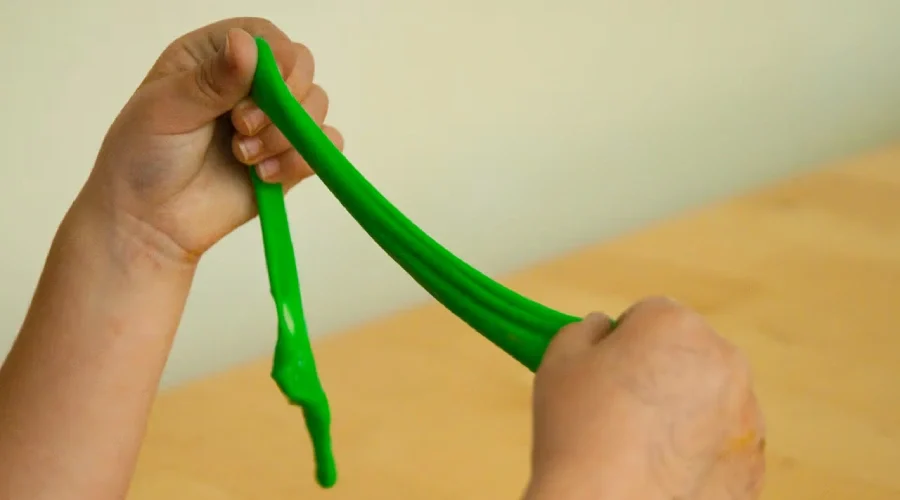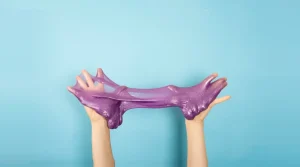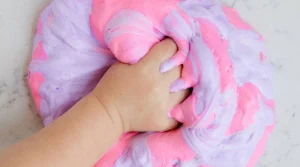
What Do Slime Toys Do? The Science and Learning Behind Slime
Curious about slime toys? Learn what they do and how they help children learn, create, and develop essential skills naturally.
#1 Toys Manufacturer in China. WhatsApp: +86 180-0088-4063. Email: [email protected]
#1 Toys Manufacturer in China. WhatsApp: +86 180-0088-4063. Email: [email protected]

When we say a slime “lasts the longest,” we’re not just talking about how long it sits on a shelf. Longevity includes how long slime stays stretchy, moist, and safe to touch.
Some slimes dry out fast. Others turn sticky or stiff after just a few days. A long-lasting slime keeps its texture and shape even after multiple play sessions. It doesn’t break apart or stick too much to your hands.
So, when judging which slime lasts the longest, we mean one that holds its texture, stays safe, and remains fun to use for as long as possible with proper care.
Not all slime is built to last. Some types dry out in days, while others can stay stretchy for weeks. But what really makes one slime outlive another? It’s not just the ingredients. Air, temperature, how often it’s played with, and even how clean your hands are—all these shape how long slime stays fun and safe to use.
Slime begins to break down when exposed to air for too long. The water inside starts to evaporate. This leads to cracking, drying, or stiffening. On the flip side, too much moisture can make slime sticky or encourage mold growth.
Even with store-bought slimes, keeping the lid slightly open or storing them in humid areas can shorten their life. A tightly sealed, dry container makes a huge difference.
>> 7 Amazing Facts About Watery Slime: The Science Behind the Goo
Slime doesn’t like extremes. Heat can make it runny or separate. Cold can harden it and cause texture loss. A cool, dry room—ideally between 65–75°F—is best for storage.
Storing slime near windows, heaters, or fridges might ruin it faster than expected. Sunlight can also fade color and break down additives like glitter or foam beads.
The more you play with slime, the faster it wears out. Stretching, poking, and squishing add air and dirt. That’s normal—but it affects lifespan.
Rough handling or overuse—especially pulling it too far—can tear the structure apart. Soft, careful play helps maintain its shape and texture for much longer.
Every time slime touches hands, it picks up oils, crumbs, and bacteria. Dirty play surfaces or unwashed hands lead to faster breakdown. That’s how many slimes get moldy.
To make slime last, keep hands clean, avoid mixing food or liquids, and store it in a sanitized container. Once it smells odd or changes color, it’s time to toss it.
Slime isn’t just one thing—it comes in many textures, colors, and formulas. Some slimes are made to stretch, others to squish or sparkle. Each type has a different shelf life depending on how it’s made and how it’s used. In this section, we’ll look at the most popular store-bought slimes and compare how long they typically last under normal conditions.
Classic slime is known for its smooth, stretchy texture. It’s usually made with glue, activator, and sometimes a bit of lotion. When stored in an airtight container and handled with clean hands, this slime can last anywhere from 2 to 4 weeks. However, exposure to air dries it out fast, especially around the edges. Once it starts feeling stiff or rubbery, it’s nearing the end of its life.
Fluffy slime is puffed up with shaving cream, giving it a soft and airy feel. While fun to squeeze and stretch, it tends to dry out faster than classic slime. On average, fluffy slime lasts 1 to 2 weeks if kept in a sealed container. The added foam ingredients break down over time, making the slime shrink and lose its bounce. If it becomes sticky or leaves residue, it’s time to toss it.
Clear slime looks like glass—until you play with it. It’s made without foam or lotion, which helps it last longer than fluffy slime. In clean, airtight storage, clear slime can last 3 to 6 weeks. Jelly slime is a soft, thicker variation that may break down faster, usually within 2 to 3 weeks. Dirt, lint, or skin oils can cloud the slime and make it degrade sooner.
Butter slime is smooth and spreadable, made by mixing slime with soft clay. Cloud slime uses artificial snow to create a fluffy, drizzle-like texture. Both types are rich in additives, which makes them softer but shortens their lifespan. Butter slime usually lasts around 1 to 2 weeks. Cloud slime often dries out in less than 10 days, especially if it’s left uncovered for even a short time.
Crunchy slime is packed with foam beads or plastic add-ins for a crackling sound. The beads don’t break down, but they can fall out or cause the slime to stiffen. This type of slime generally lasts about 2 to 3 weeks, depending on how often it’s played with. If the slime loses its stretch or the beads start falling everywhere, it’s probably time to replace it.
These slimes often include metallic powder, glow pigments, or other sensory effects. Because of their complex ingredients, they’re more sensitive to air, heat, and light. Most specialty slimes last about 2 to 4 weeks, though magnetic slime may last longer if it stays sealed and isn’t overhandled. UV or glow-in-the-dark types can lose their effect after repeated exposure to light or heat.
Not all slimes are built to last. Some dry out quickly, while others stay stretchable and smooth for weeks. By comparing their ingredients and behaviors over time, we can begin to understand which slime formulas are more durable—and why. This section pulls together everything we’ve explored to help answer the big question: which slime really lasts the longest?
Slimes made with fewer additives and strong polymer bonds tend to last longer. Classic clear slime, for example, often outlives fluffy or butter slimes because it contains fewer ingredients that break down. Its simple glue-and-activator base forms a stable gel. In contrast, slimes with shaving cream, instant snow, or clay dry out faster due to moisture loss and ingredient separation.
Among all types, clear slime and well-balanced magnetic slime usually lead the pack for longevity. When sealed and handled properly, they can hold their texture and stretch for up to a month or more.
Fun textures often come at a cost. Fluffy slime may feel soft and light, but the added air and foam mean it dries out faster. Butter slime spreads like frosting but contains clay, which can crack or stiffen over time. Even crunchy slimes, while exciting to squeeze, tend to lose their snap as beads fall out or the base dries.
There’s a clear trade-off: the more complex the texture, the shorter the shelf life. Simple slimes may not offer as much variety, but they tend to stick around longer.
When shopping for long-lasting slime, check for signs of simplicity. Look for ingredient lists that are short and clear—slime made mainly from PVA glue and borate activator tends to last longer. Labels that mention “airtight packaging,” “low-moisture formula,” or “resists drying” are also promising.
Avoid slimes that advertise extreme stretch, puff, or drizzle effects if longevity is your goal. These often include volatile additives like foam or snow powder that shorten the lifespan.
Even the best slime doesn’t last forever. Over time, physical and chemical changes will reveal that your slime is starting to break down. From strange smells to texture changes, spotting these signs early can help you decide whether it’s time to toss it or try to revive it safely.
One of the first signs that slime is going bad is a shift in texture. If the slime becomes unusually sticky, crumbly, or rubbery, it means the balance of ingredients has changed.
Sticky slime may have absorbed moisture, while dried-out slime loses elasticity. This can happen after too much air exposure or from being overstretched. Once texture changes, slime often loses its appeal and playability.
Slime is vulnerable to contamination, especially if handled with dirty hands or placed on unclean surfaces.
Over time, you might notice dark spots, unusual streaks, or fuzzy patches. These are often signs of mold or bacteria, which make the slime unsafe for further use. Discoloration without mold may also signal chemical breakdown due to exposure to light or heat.
A sharp or sour smell coming from the slime usually means bacterial growth or ingredient spoilage. Safe slime should be nearly odorless or have only a faint scent if added during manufacturing.
Dehydration can also occur silently. If the slime feels stiff, hard, or flaky, it has likely lost too much moisture to function well. Once slime dries out beyond repair, it’s best to discard it.
Proper storage can make a big difference in how long your slime stays stretchy and safe. Simple habits like using the right container or keeping the slime clean during play help maintain its quality over time. Think of slime as something that needs a clean, sealed, and stable environment to survive.
Always store slime in an airtight container to slow down moisture loss and prevent air exposure. Plastic jars with screw-top lids or snap-lock containers are ideal.
Avoid leaving slime in loosely sealed bags or open trays, which will cause it to dry out quickly. Transparency is helpful too—you can check the slime’s condition without opening the lid.
Slime can pick up dirt, crumbs, and even bacteria every time it’s handled.
Encourage kids to wash their hands before and after playing. Surfaces should be smooth and clean—plastic mats or table covers work well. Any debris that enters the slime might affect its color, texture, or even cause it to spoil faster.
Room temperature is usually enough for storing slime. However, in hot or humid climates, refrigeration may slow spoilage and extend shelf life. Just make sure the slime is fully sealed to avoid drying out.
Never freeze slime—it can separate or become brittle. Bringing refrigerated slime back to room temperature before play helps restore its texture.
The way kids interact with slime can shorten or extend its usable life. Age, motor control, and play styles all affect how often slime is dropped, pulled, left out, or mixed with dirt. By understanding these behaviors, adults can better guide safe and longer-lasting slime use.
Younger children tend to stretch and tear slime more forcefully, sometimes causing it to snap or break apart. Frequent pulling also introduces air bubbles, which can change the texture. In contrast, gentle kneading and slower movements keep the slime intact and extend its lifespan. Teaching kids how to handle slime with care helps make each batch last longer.
Group play often leads to more frequent drops, contamination, or overuse. Slime gets passed around, handled by many hands, and left out longer. While social play is great for creativity and bonding, it also increases wear and tear. Solo play usually results in more controlled handling and less mess, making the slime easier to preserve.
When slime is used for sensory development or learning, it’s often handled with more structure. For example, a child following specific instructions in a classroom may treat the slime more carefully than during free-form play. Structured activities help children learn to use slime respectfully, often leading to longer-lasting results.
Different types of slime offer unique sensory experiences, but their additives also affect how long they last. Understanding how scents, textures, and special materials influence slime durability helps choose the best option for lasting fun.
Scented slimes often contain essential oils or artificial fragrances. These scents can fade quickly as volatile compounds evaporate when exposed to air. Frequent opening and prolonged play can speed up this loss. Moreover, added scents sometimes affect the slime’s moisture balance, causing it to dry out faster than unscented versions.
Slimes with glitter, beads, or foam balls offer fun textures but can impact longevity. Small particles may detach during play, leading to loss of sensory effects. Additionally, these materials can introduce tiny gaps where air and moisture enter, accelerating slime dehydration or causing texture changes over time.
Glow-in-the-dark slimes rely on phosphorescent pigments that absorb and emit light. While visually appealing, these pigments can degrade or fade after extended exposure to light or heat. The base slime may remain usable, but the glowing effect often diminishes before texture or stretchiness declines.
Long-lasting slime means repeated skin contact and playtime. It’s important to balance fun with safety to avoid skin issues or hygiene problems.
Some children have sensitive skin that reacts to ingredients in slime after long exposure. Ingredients like borax, fragrances, or preservatives can cause irritation or allergic reactions if slime stays on the skin too long. Monitoring playtime and washing hands after use reduces risks.
Younger kids may put slime in their mouths or play roughly, increasing risks. For long-term use, age-appropriate slime formulations and supervised play are essential. Older children can better understand hygiene and handle slime more carefully, helping maintain safety and slime quality.
Over time, slime can accumulate dirt, dust, or small debris, which raises hygiene concerns. Small pieces of slime also pose choking hazards if detached and swallowed. Regular inspection, proper storage, and limiting slime to safe play areas help minimize these risks.
Choosing the longest-lasting slime means considering its ingredients, type, and how it’s stored and played with.
While no slime lasts forever, understanding the factors that impact longevity helps parents and caregivers select slimes that balance fun and durability. Prioritizing safe handling and mindful storage ensures slime remains enjoyable and safe, making playtime a positive experience for kids.
Slime that smells bad, shows mold growth, or has changed color or texture is likely spoiled. If it feels overly sticky, dries out unevenly, or causes skin irritation, it’s best to discard it to avoid health risks.
Adding small amounts of water or lotion can temporarily soften dried-out slime, improving texture and flexibility. However, too much moisture may encourage bacterial growth or make slime sticky, shortening its overall lifespan.
Yes, slime can lose texture due to moisture loss, ingredient separation, or contamination. Frequent handling and exposure to air break down the polymers, causing slime to become hard, crumbly, or less stretchy.
Storage is crucial. Airtight containers prevent slime from drying out and protect it from dust and bacteria. Containers should be clean and used only for slime to avoid contamination that reduces slime’s lifespan.
Temperature impacts slime texture and durability. Heat can soften or melt slime, while cold can make it stiff and brittle. Keeping slime at a consistent room temperature helps maintain its best play condition longer.
More Related...

Curious about slime toys? Learn what they do and how they help children learn, create, and develop essential skills naturally.

Uncover the science of thermochromic slime — where chemistry meets creativity through playful, color-changing reactions.

Uncover why slime play is more than fun—7 benefits include sensory learning, creativity, and fostering emotional and cognitive development.

Understand how stress-relief putty helps manage anxiety, improve focus, and promote relaxation through tactile sensory play.

Our team will answer your inquiries within 48 hours.
Copyright © 2025 GuangDong AKIA Technology Co,. Ltd. All Rights Reserved